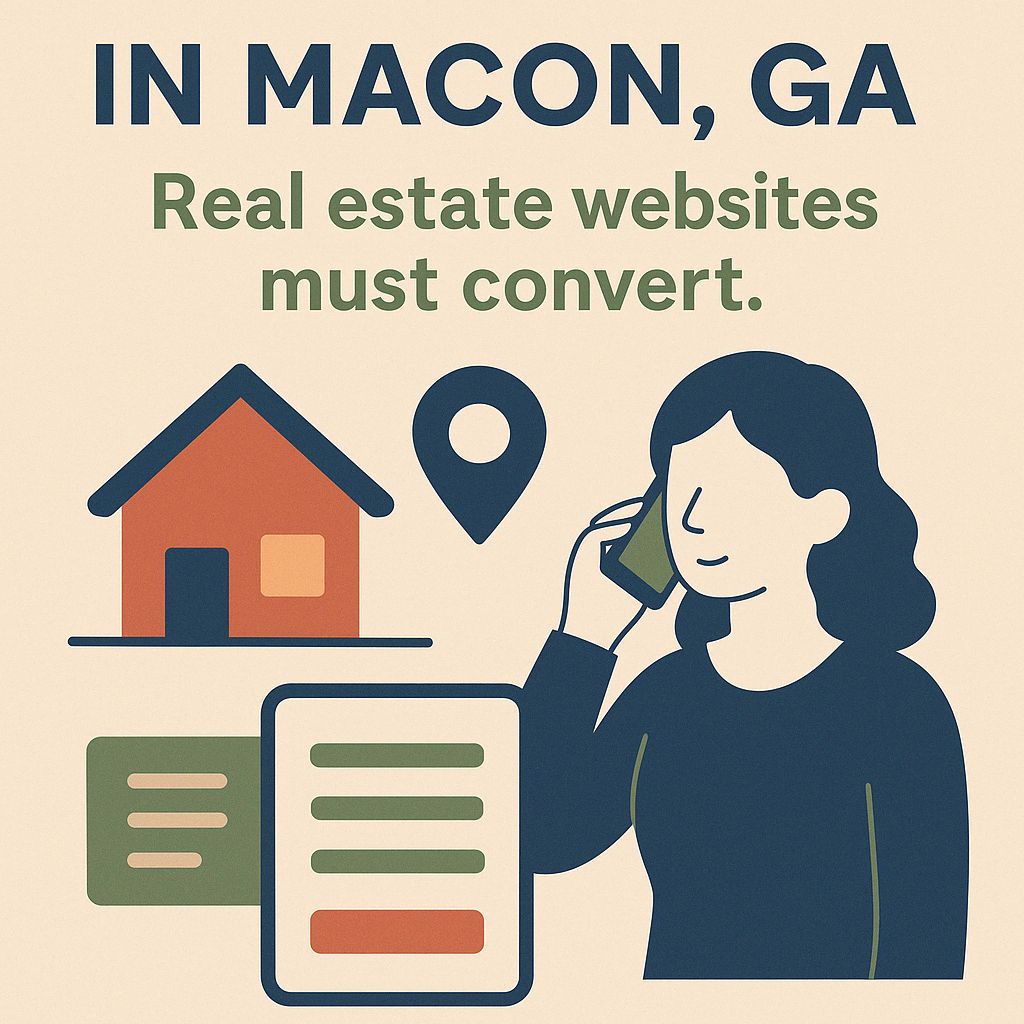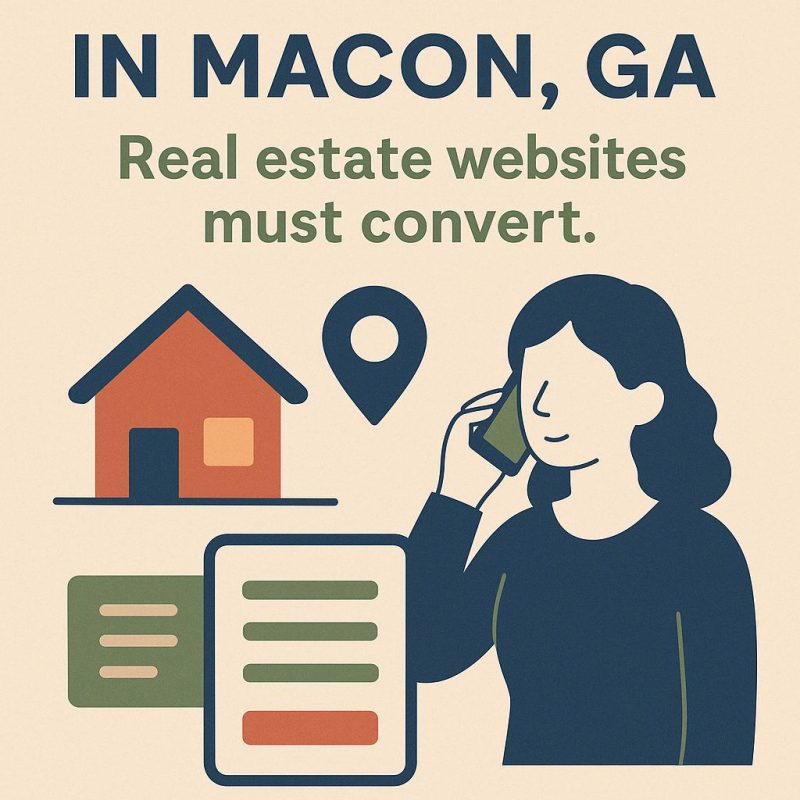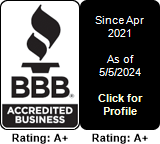When someone in Macon starts looking for a home, their first stop isn’t the courthouse lawn anymore. It’s your website. Whether they’re moving from across town or across the country, the digital version of your brand is often their first showing. But the best listings and market knowledge in the world won’t mean a thing if your site doesn’t convert. If the layout confuses, the forms frustrate, or the CTAs underwhelm, leads slip through fast. Real estate is competitive, especially in a growing town like Macon. Your site can’t just be pretty. It has to perform. This cluster dives into how local real estate websites can turn casual browsing into booked tours and signed contracts, using conversion-first strategies that speak to local buyers and sellers.
Homepage Design Tips for Macon Realtor Websites
First impressions online are no less critical than in person. And in real estate, they often carry even more weight. When a buyer or seller in Macon lands on your homepage, they’re not just deciding whether to browse. They’re asking if you get this market. Your design should answer with a clear yes.
Start by avoiding the generic. That cookie-cutter homepage template you found online might look sleek, but it probably wasn’t built with Macon in mind. Show real photos of properties you’ve helped close, not stock mansions from Miami. Use headlines that say where you work: “Helping Families Buy and Sell in North Macon, Vineville, and Warner Robins.” That location-based messaging builds immediate trust.
Above the fold, prioritize search. People want to browse listings now, not read your bio. Include a simple property search bar with filter options like price range, zip code, and beds/baths. Keep it clean. Keep it fast.
Then add proof. A rotating slider of testimonials is fine, but one clear quote. Bolded, centered, and real. Works better. Bonus if it’s neighborhood-specific: “We sold our house in Shirley Hills in five days.”
Keep your menu minimal. No one cares about your team’s vacation photos or blog archive during that first visit. Lead with: Buy, Sell, Listings, Contact.
And make sure your phone number isn’t hiding. It should be visible on desktop and tappable on mobile. In Macon, where people still like calling, this matters more than you think.
Optimizing Property Pages for Higher Inquiries in Macon
A listing page shouldn’t just showcase a house. It should invite action. Too many local real estate sites treat property pages like digital flyers: a few photos, a block of text, and a buried “Schedule a Showing” button. In Macon’s competitive market, that’s not enough.
Start with clarity. Each property should feel like its own micro-site, not a flat listing. Use large, high-resolution images up top, but compress them for speed. Nobody’s waiting ten seconds for a kitchen to load.
Beneath that, give context. Mention the neighborhood by name. “Located on a quiet street in Ingleside Woods” means more to a Macon buyer than “great location.” Tie the home to the area emotionally. Include details like schools, walkability, distance from Amerson River Park.
The CTA should repeat, not hide. “Schedule a Showing” belongs under the photos and again after the description. Use buttons, not links. Use color, not assumptions.
Add urgency with “Recently Viewed” counters or “2 Other Buyers Inquired This Week.” You don’t need to fake it. Just reflect engagement data honestly.
For longer listings, include a “Jump to” nav: Overview, Photos, Features, Map, Inquiry. Mobile users especially benefit from this, as they tend to scroll quickly.
Finally, end each listing with a contact box specific to that home. Auto-fill the subject: “Interested in 1283 Arlington Place.” This removes friction and increases form completion rates.
Buyers don’t just shop by price. They shop by feel. Your property page should feel as alive and compelling as the house itself.
How CTAs Drive Leads on Local Real Estate Platforms
A call-to-action is more than a button. It’s a conversation starter. And in Macon, where people prefer direct, clear communication, your CTAs have to do more than say “Learn More.” They have to answer the question: Why now?
Let’s start with placement. CTAs belong early and often. One above the fold. One after the listing overview. One near the bottom. Not crammed in, but logically spaced. Like signposts on a long walk.
Then comes tone. “Schedule a Tour” outperforms “Submit” every time. “Ask a Question About This Property” beats “Contact Agent.” Specificity builds trust. It feels less like marketing and more like conversation.
Use visual contrast to make buttons pop, but stay on brand. If your site is soft greens and neutrals, don’t drop in a bright orange CTA unless it truly fits. Consistency breeds confidence.
On mobile, CTAs should float or stick. A static button buried below ten swipes of listing images gets ignored. But a thumb-friendly, always-visible “Book a Visit” bar converts.
Experiment with supporting text too. A simple “We respond in under 2 hours” under your CTA reduces hesitation. Small promises make big differences.
And don’t forget split testing. If you’re using a platform like WordPress or Webflow, tools like Google Optimize let you A/B test CTA language and color. One change could mean 10 to 20 percent more leads.
A strong CTA doesn’t push. It welcomes. Especially in real estate, where timing and trust matter equally.
Building Trust with Local Buyer Personas in Macon
If your site speaks to “buyers” and “sellers” as generic categories, you’re missing a chance to connect. Macon isn’t a monolith. The couple downsizing from their five-bedroom in North Macon doesn’t think like the young teacher relocating to Gray. Your content and your design needs to reflect those differences.
Start by identifying your key personas. First-time buyers. Move-up families. Retirees. Investors. Each of these groups has different priorities, fears, and questions. Address them directly.
For example, a first-time buyer might want an explainer on pre-approval or down payments. Make that front-and-center on your homepage or in your nav. A retiree might want to know about HOA rules and single-level homes. Offer filterable search options and pages that speak to “Low-Maintenance Living.”
The words you use matter. “Affordable” might appeal to one persona and scare off another. “Charming bungalow” works for one audience, while “Updated ranch with large lot” resonates with another. Align your voice with your audience.
Use testimonials that match persona types. A young couple talking about their starter home. A single mom describing her relocation process. A long-time homeowner praising how easy you made the sale. Specificity builds relatability.
Design-wise, segment where possible. Consider homepage blocks that say “New to Buying?” or “Selling an Inherited Home?” Clicking those should lead to tailored content.
In Macon, where referrals still drive so much business, buyers want to feel like you understand them. That starts with showing them people like them already trust you.
Reducing Form Friction for Real Estate Lead Gen in Macon
No one likes filling out forms. But in real estate, they’re unavoidable. The trick is to make it feel like less of a task and more like the first step in a conversation. Especially in Macon, where people still value personal interaction.
First: reduce fields. Don’t ask for a timeline, budget, and loan status in the first contact form. Just name, email, and message. You can gather the rest later.
Use smart defaults. “Preferred Contact Method?” Default to “Phone” if 70 percent of your leads pick it. “Best Time to Reach You?” Use drop-down instead of free text.
Label fields clearly. “Message” is vague. Try: “Tell us what caught your eye about this home.”
Use visual cues. Group related fields. Use light background shading for sections. Make required fields obvious, but don’t overload the page with red asterisks.
On mobile, forms should be tap-friendly. Space between inputs. Big buttons. No tiny checkboxes.
Progress indicators help. “Step 1 of 2” is more welcoming than a long block of fields with no end in sight. People will commit to small actions if they can see the finish line.
Also: immediate feedback. “Thanks. We’ll be in touch within an hour” is way better than a silent form redirect.
In a market like Macon, where buying a home still feels personal, your form should feel like an invitation, not an interrogation.
Want a Real Estate Website That Actually Converts?
We build local-first platforms that help realtors turn browsers into booked showings and listings into closed deals. If your site needs more than pretty photos to drive real leads, we’ll help you make every click count. Visit conversion-focused real estate web design in Macon and let’s build something that works.



